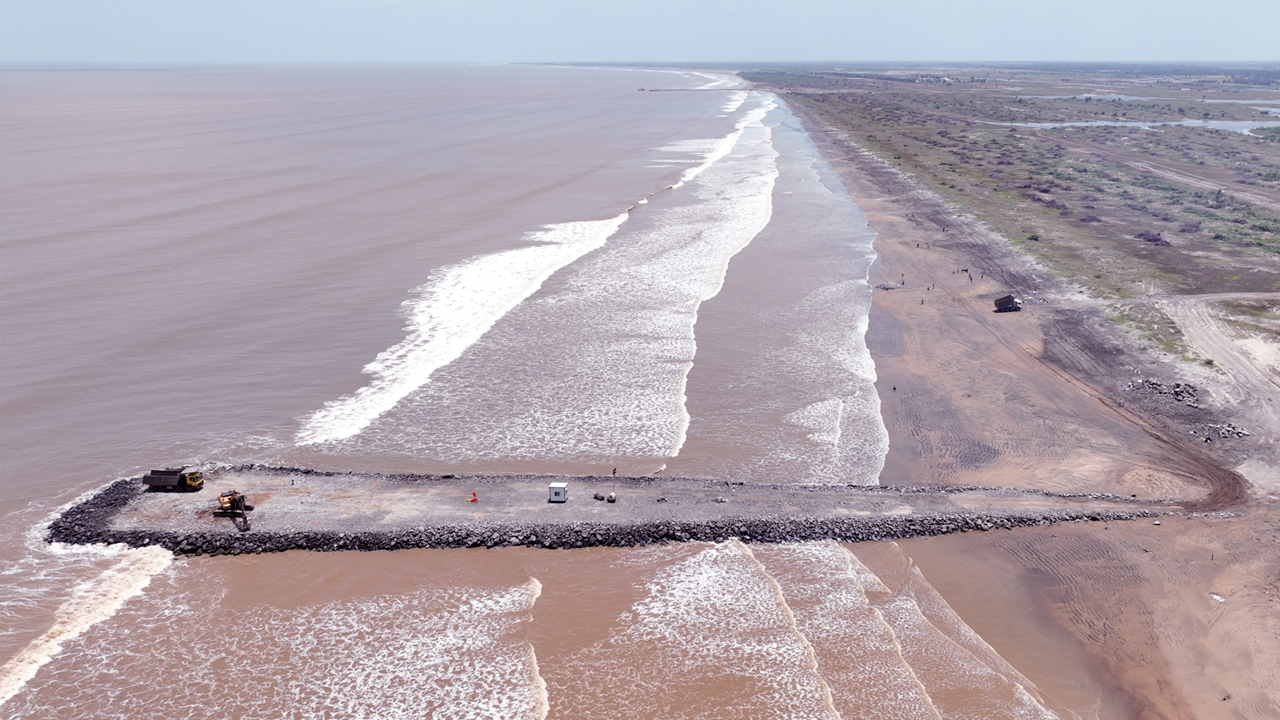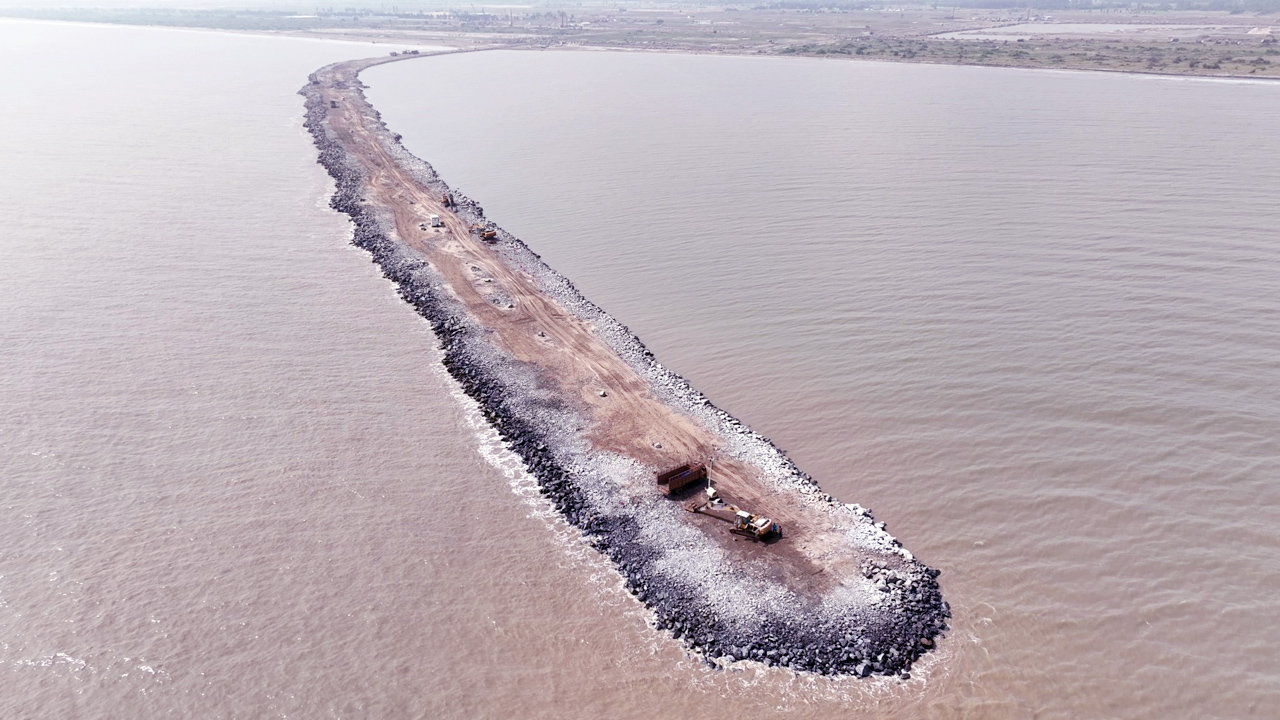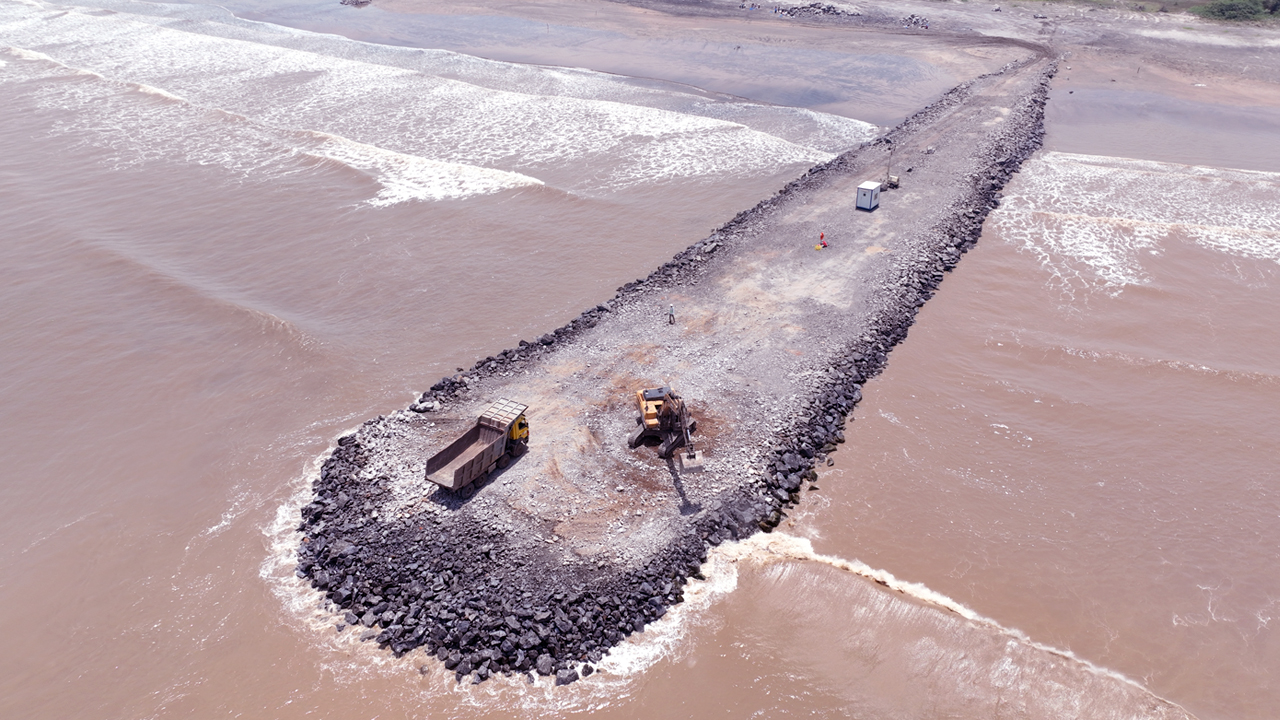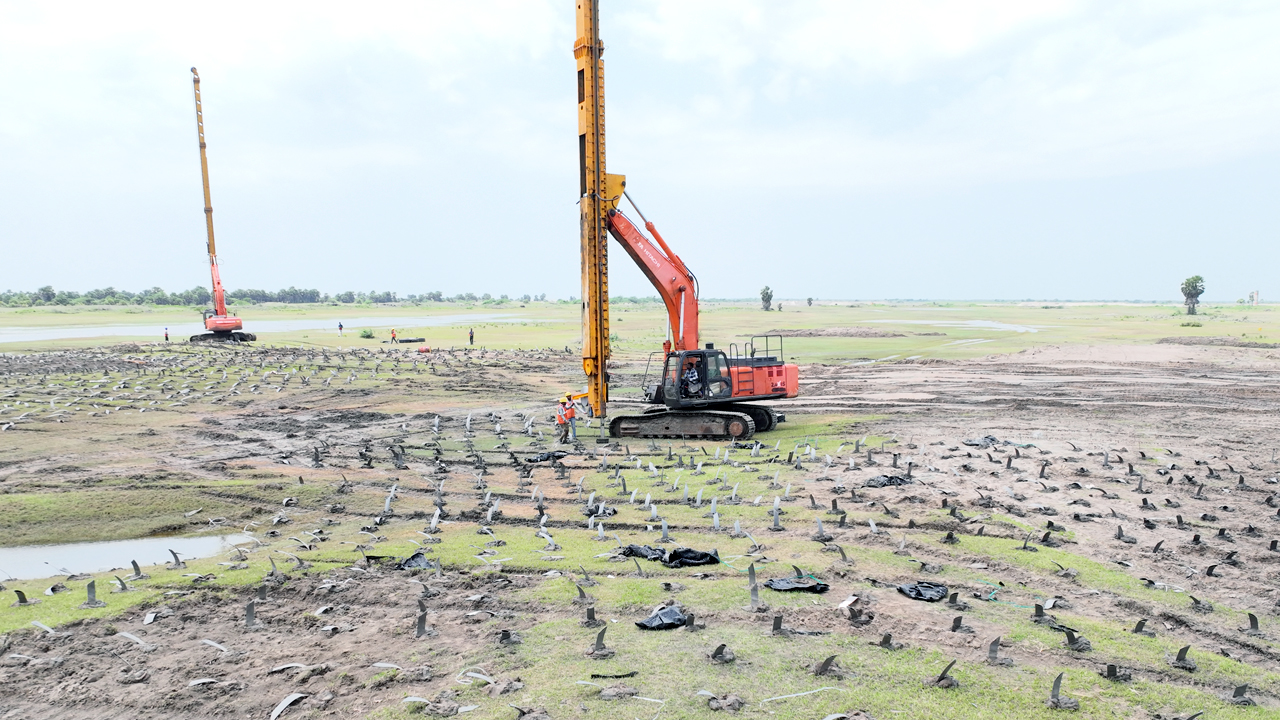
On the vibrant coast of Andhra Pradesh, where the Bay of Bengal meets the land, a groundbreaking project is shaping the future of maritime trade in India. The Machilipatnam Greenfield Port, a colossal endeavour led by Megha Engineering and Infrastructures Limited (MEIL), is set to redefine the region's economic landscape. As the sun rises over the Bay, the silhouette of this modern marvel emerges, symbolizing progress, innovation, and a commitment to the prosperity of the state.

Commissioned by the Andhra Pradesh Maritime Board, the Machilipatnam Greenfield Port spans a vast expanse of 2000 acres along the picturesque coastline. This is not merely a port; it's a gateway to prosperity, a nexus where trade, technology, and sustainability converge.
The port's construction is meticulously planned, with 1700 acres allocated to the main facilities and an additional 234 acres dedicated to the essential infrastructure. Four expansive berths stretching 1200 meters stand ready to welcome vessels worldwide. These berths are equipped to handle a staggering total goods uploading and unloading capacity of 35 million tonnes annually, ensuring a smooth flow of trade.
The berths are strategically positioned, with two facing east and two facing west. Three berths cater to all types of goods, while the fourth specializes in coal shipments. This segregation ensures optimal organization and efficiency in managing diverse cargo. Ships with a maximum capacity of 80,000 tonnes can navigate the approach channel, a carefully dredged waterway that spans 13 kilometres in length, 450 meters in width, and reaches a depth of 17 meters.
Guardians of the Port
Standing as guardians against the relentless waves are the breakwaters – the South breakwater stretching an impressive 2 kilometres, filled with 9 lakh metric tonnes of rock, and the North breakwater, 250 meters in length, fortified with 60,000 metric tonnes of rock. These structures shield the port from the raw power of the sea, providing a safe harbour for ships to dock and unload their cargo.

To build the port's foundation, we use special methods like trailor suction method, cutter suction methods to remove sand and dirt from the ocean floor creating necessary depth for vessels. The trailor suction method extracts a massive 3 crore cubic meters of sand, and the cutter suction method takes on the challenge of removing 1.5 crore cubic meters of harder seabed materials, employing a vessel equipped with a rotating cutting head. An additional 45,000 cubic meters are cleared using other specialized methods, paving the way for the port's emergence.
Building Solid Foundation
The construction process involves a symphony of materials, with 60 lakh cubic meters of sand and soil being meticulously removed. In their place, a mixture containing mud, black gravel, stones, and sand is carefully laid to strengthen the land. The core material, comprising 10 lakh metric tonnes of rock, black stone, sand, and cement, forms the backbone of the port's infrastructure, ensuring durability and resilience against the elements.
Defying the Waves
To tame the relentless energy of the sea, 65,000 cubic meters of Tetra pads, concrete blocks with a unique geometric design, are strategically placed along the coastline. These Tetra pads act as a barrier, disrupting the force of incoming waves and protecting the port's infrastructure.
Beneath the Surface
A crucial aspect of the port's construction lies beneath the sea, where a diaphragm wall, consisting of a staggering 65,000 metric tonnes of concrete, is installed. This underground barrier serves as a watertight shield, ensuring the port's resilience against the pressures of the sea. We also use a strong material called reinforced concrete, about 2 lakh cubic meters of it, underneath the sea. This makes the port even stronger and more solid.

In the realm of geotechnical engineering, the Machilipatnam Greenfield Port introduces a novel approach with the installation of 1.8 crore meters of pre-fabricated vertical drains (PVD). Each drain, 20 meters in length, accelerates the consolidation of soil in areas with low permeability. With their prefabricated plastic or composite cores, these drains enhance the consolidation process and fortify the port against the challenges posed by the ever-changing coastal environment.
Transforming Tides
As the construction of Machilipatnam Greenfield Port unfolds, it emerges not only as a marvel of engineering but as a symbol of progress, innovation, and the unwavering spirit of Andhra Pradesh.
The rhythmic dance of ships entering the well-crafted approach channel, the loading and unloading of goods on the vast berths, and the impervious stance of the breakwaters against the waves all paint a picture of a port ready to script a success story for generations to come.
Machilipatnam Greenfield Port is not just a construction project; it embodies a vision that transcends the boundaries of the sea, reaching out to touch the lives of those who will sail its waters and tread its shores for generations to come.